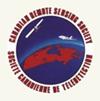Retrieval of Lake Ice Characteristics from SAR Imagery
IF 2.1
4区 地球科学
Q3 REMOTE SENSING
引用次数: 3
Abstract
Abstract Boreal lakes ecosystems can remain partially or completely covered by ice and snow during an important portion of the year. Alterations of lake and river ice properties can deteriorate the conditions of local ice roads, negatively influencing Nordic communities and economical activities. Monitoring of lake ice characteristics and dynamics is therefore crucial. In this study, Sentinel-1 Synthetic Aperture Radar (SAR) satellite imagery is exploited to evaluate changes in the ice regime over shallow and deep high-latitude lakes during the winters of 2018 and 2019. The methodology proposed, based on the combined analysis of SAR intensity and interferometric coherence maps, enables the extraction of important characteristics of ice dynamics. Overall, the lake ice thickness change derived from Differential Interferometric SAR (D-InSAR) increases with the lake depth. The D-InSAR-derived mean rate of growth, in general, agrees with the one estimated from records of in-situ ice thickness measurements. The methodology presented herein could be temporally extended to support the understanding of historical and current climate conditions. This could be done by using archived and newly available imagery to improve lake ice models.从SAR图像中反演湖泊冰特征
摘要在一年中的重要时间里,北方湖泊生态系统可能会部分或完全被冰雪覆盖。湖泊和河流结冰特性的改变会恶化当地结冰道路的状况,对北欧社区和经济活动产生负面影响。因此,监测湖泊冰的特征和动态至关重要。在这项研究中,Sentinel-1合成孔径雷达(SAR)卫星图像被用于评估2018年和2019年冬季高纬度浅湖和深湖冰情的变化。所提出的方法基于SAR强度和干涉相干图的组合分析,能够提取冰动力学的重要特征。总的来说,差分干涉SAR(D-InSAR)得出的湖冰厚度变化随着湖深的增加而增加。一般来说,D-InSAR得出的平均增长率与根据现场冰厚度测量记录估计的增长率一致。本文提出的方法可以在时间上进行扩展,以支持对历史和当前气候条件的理解。这可以通过使用存档的和新获得的图像来改进湖冰模型来实现。
本文章由计算机程序翻译,如有差异,请以英文原文为准。
求助全文
约1分钟内获得全文
求助全文
来源期刊

Canadian Journal of Remote Sensing
REMOTE SENSING-
自引率
3.80%
发文量
40
期刊介绍:
Canadian Journal of Remote Sensing / Journal canadien de télédétection is a publication of the Canadian Aeronautics and Space Institute (CASI) and the official journal of the Canadian Remote Sensing Society (CRSS-SCT).
Canadian Journal of Remote Sensing provides a forum for the publication of scientific research and review articles. The journal publishes topics including sensor and algorithm development, image processing techniques and advances focused on a wide range of remote sensing applications including, but not restricted to; forestry and agriculture, ecology, hydrology and water resources, oceans and ice, geology, urban, atmosphere, and environmental science. Articles can cover local to global scales and can be directly relevant to the Canadian, or equally important, the international community. The international editorial board provides expertise in a wide range of remote sensing theory and applications.
 求助内容:
求助内容: 应助结果提醒方式:
应助结果提醒方式:


